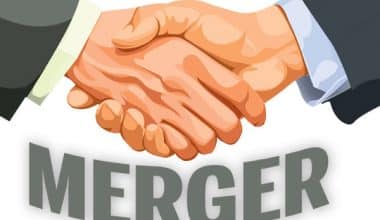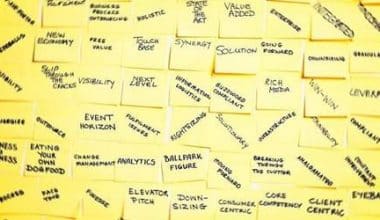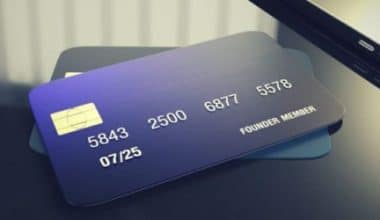A significant portion of the global population lacks access to financial services, rendering them unbanked and unable to avail themselves of the requisite financial resources. Microlending is an ideal solution for a specific group of people and small enterprises that do not meet the criteria for conventional lending. Crowdfunding and peer-to-peer financing, including microlending, can provide monetary opportunities that are not accessible through traditional financing options for entrepreneurs with a high risk of default due to their credit or circumstances. However, let’s delve deeper into the small business micro lending platforms and the micro lending investment company.
What is Micro Lending?
Microlending is a financial practice that involves providing small loans, commonly referred to as microloans, to small business owners. Small business owners, particularly those in developing nations, may lack access to conventional financial products and institutions. Small businesses often rely on alternative loan services to obtain the necessary financing, rather than going through traditional channels.
Microloans, also known as peer-to-peer loans, serve as a versatile financing option for entrepreneurs seeking to launch a new venture or grow an existing one. Some examples of assets that a business may possess are operating capital, assets, materials, furniture, fittings, machinery, and equipment.
Micro Lending Platforms
The micro lending platforms include the following:
#1. LiftFund
Small company loans are available via LiftFund, situated in San Antonio and serving 15 states. This CDFI is a non-profit organization that provides access to unique lending products such as SBA microloans and SBA community advantage loans. LiftFund offers SBA 504 loans for long-term financing of real estate or heavy machinery. After applying, LiftFund can help firms that may have trouble getting funding due to poor credit, a lack of collateral, or a lack of experience. Group training sessions and one-on-one consultations with business coaches are also available to borrowers.
#2. Kiva
Kiva is a global nonprofit that started in San Francisco in 2005 with the goal of increasing access to microloans in order to boost economic growth in underprivileged areas. Kiva’s motto is “Make a loan, change a life,” and the organization’s policy is to put every dollar donated into funding loans, up to a maximum of $25. Microloans from Kiva can go as high as $15,000, and the repayment period might be as long as 36 months.
Microloans from Kiva have covered the costs of education, launched businesses for women, helped farmers purchase machinery, and helped families pay for lifesaving medical care. Kiva loans don’t have strict requirements like those of traditional bank loans, such as a minimum credit score or proof of income for several years.
#3. CDC Small Business Loans
This is also one of the micro lending platforms that tailor microloans to the specific requirements of business owners. These financing options are ideal for startups and growing businesses. The money can be used for anything the business needs, such as paying salaries and rent or buying machinery.
Microloans from CDC Small Business Finance are more cost-effective than alternative loan options. There are 12 hours of free business consulting included with every loan to ensure sustainable growth. You might be eligible for one of these alternatives if a bank or credit union has rejected your company for a loan. Three- to five-year loan durations are available at fixed interest rates of 8% to 10%.
#4. Grameen America
Grameen America offers low-income women business owners in the United States microloans (starting at no more than $2,000), along with financial education and support. This is in response to the fact that women are barely half as likely as men to receive an SBA loan from prevalent financial institutions, which grant funds at 3.2% versus 6.4% for men.
The borrower first forms a group with four other like women, which is the first step in Grameen America’s innovative business strategy. Then they receive instruction on how to acquire loans, save money, and establish credit. Following the workshop, each participant receives a microloan and a micro-savings account to put toward starting or expanding her own business. The group gets together once a week to discuss business and finance. This is one of the micro lending platforms that also help borrowers enhance their credit scores and become eligible for additional financing by reporting microloan installments to Experian.
#5. Small Business Administration’s Microloan Initiative
The Small Business Administration’s Microloan Program provides loans of up to $50,000 to start-up firms and nonprofit childcare facilities that meet specific criteria. Microloans typically range from $7,000 to $13,000, with the Small Business Administration (SBA) funding nonprofit community-based groups with lending, management, and technical support experience. Microloans are distributed to qualified borrowers through these middlemen. Each intermediate lender has its own criteria for determining who qualifies for loans based on credit history and other factors.
Intermediaries typically demand collateral and the business owner’s personal guarantee. An SBA microloan may have a maximum repayment term of six years. Interest rates average around 8%-13%. Your regional SBA District Office can help you locate a participating microlender and guide you through the application process for an SBA microloan.
Small Business Micro Lending
The small business micro lending platforms include the following:
#1. Accion USA
This is of the small business micro lending platforms operating on a global scale, committed to providing individuals across the world with the financial resources necessary for the development and growth of their businesses. This is the biggest system of local microlending entities in the United States and is affiliated with Accion, a global organization. Accion has disbursed almost 50,000 loans, amounting to over $450 million, through its network of workplaces in nearly 30 cities throughout the nation.
Microlending acquired via Accion function similarly to SBA microloans, albeit with funds procured from a diverse range of sources. The organization has established corporate alliances with prominent entities such as Citibank, Sam’s Club, and Samuel Adam Brewing, among others. It is steadfast in its dedication to imparting entrepreneurial training to its borrowers and extending it to the areas served by its nationwide network.
Accion loans are accessible in quantities up to $1 million, indicating that they offer more than just microloans. However, microlending is a significant aspect of their services. To be eligible, a minimum credit score of 575 is required, with no bankruptcies within the past year, no foreclosures within the past two years, and outstanding taxes or court judgments not exceeding $3,000. It is necessary for startups to have a co-signer. The requirements may vary slightly depending on the Accion branch to which you apply.
#2. LiftFund
This is one of the small business micro lending platforms that is recognized as one of the leading conduit lenders for the Small Business Administration’s microlending program. This is a prominent microlending institution that has extended loans exceeding $210 million to small businesses operating in 13 states. The organization provides loan amounts ranging from $500 to $1 million, with a notable presence in the microlending sector. If you meet the eligibility criteria for a LiftFund microloan, you may utilize the funds for a wide range of business purposes, including but not limited to startup capital, stock, machinery, real estate acquisitions and enhancements, and other related expenses.
One important consideration is that, in the case of funding a startup, it is necessary to demonstrate an alternative source of income, such as spousal income or another employment opportunity, in order to ensure repayment of the loan. LiftFund mandates collateral that is commensurate with the loan amount being requested. The main factors that render an individual ineligible are ongoing bankruptcies and delinquent tax liens that are not currently under a payment arrangement.
#3. Kiva
Kiva is another well-known non-profit microlender. This is a nonprofit organization that lends money to those in need without charging them any interest. The repayment duration for the loans is anywhere from three months to three years. You need to get a loan from a close relative or friend before you can apply for this.
The fact that many of the microloans on the Kiva platform are interest-free is the platform’s largest perk. Your loan could be crowdfunded at no interest by the platform’s diverse lenders. Kiva’s partner organizations make available some interest-bearing loans. Your business’s borrowing history will improve as a result of your responsible use of these funds.
#4. The Opportunity Fund
The primary goal of this small business micro lending platform is to make small company loans available to entrepreneurs who may not otherwise be able to get them due to their gender or race. They exclusively offer loans in New York and Washington, and only in limited circumstances do they function outside of California and Nevada. The amount you can borrow ranges from $2,600 to $250,000, and the loan repayment period can be anywhere from one to five years.
Working capital, financing equipment, making tenant improvements, buying commercial vehicles, reducing debt, expanding to a new location, and buying another firm are all possible uses for the money. You should expect to hear back from Opportunity Fund within three to five business days regarding your application for a microloan.
#5. Small Business Administration Microloans
The U.S. Small Business Administration (SBA) is in charge of managing the SBA microloan program, which aims to give small businesses financial support. This program is specifically tailored to meet the needs of small businesses that may not qualify for traditional bank loans. Through the program, microloan funds are disbursed to enterprises via local nonprofit organizations, which work closely with the SBA to ensure that the funds are used effectively and efficiently. This collaborative approach helps to promote economic growth and development in local communities while also providing much-needed support to small businesses that are the backbone of the American economy.
It is also important to note that the government agency in question does not engage in the direct provision of loan servicing to borrowers. This means that borrowers seeking loan servicing from this agency will need to explore alternative options. While this may seem like a limitation, it is worth noting that there are many reputable loan servicing providers available in the market, and borrowers are encouraged to conduct thorough research to identify the best fit for their needs.
Can You Make Money Microlending?
When it comes to investing, there are a variety of options available, each with its own set of advantages and disadvantages. One investment strategy that has gained popularity in recent years is microlending. Microlending involves providing small loans to individuals or businesses in developing countries that may not have access to traditional banking services. Also, for some investors, microlending can be a good way to diversify their portfolio while also making a positive impact on the world. One of the most effective ways to expand your revenue streams and increase your financial stability is by diversifying your income.
What Are the Risks of Micro Loans?
Microloans are frequently unsecured, implying that the lender lacks any collateral to rely on in the event of non-payment of the loan. Consequently, financial institutions may opt to impose elevated interest rates to mitigate their own risks. Microloans may present a possible drawback in that they can prove challenging to pay back at times.
Is Private Lending Profitable?
Private lending can be a highly profitable investment opportunity for those seeking to earn money from their capital. Compared to keeping cash in a bank, private lending offers a more lucrative return on investment for lenders. In addition, it is worth noting that opting for alternative lending sources can potentially yield a higher interest rate compared to conventional options such as banks and credit unions. This translates to increased earnings on your part.
Do You Need Good Credit for a Microloan?
SBA microloans stand out from other SBA loans due to their relatively relaxed credit requirements. Generally, a minimum credit score of 620–640 is necessary to qualify for these loans. Microloans, which can be granted in sums as high as $50,000, may have less stringent credit criteria, but they still necessitate collateral.
Final Verdict
Technology advancements and the emergence of the peer-to-peer economy have made microlending a viable modern financial solution. Individuals seeking to generate potentially lucrative returns can provide funding to borrowers who are either geographically limited or unable to obtain credit from conventional sources like banks or credit unions.
References
- blog.hubspot.com
- investopedia.com
- nerdwallet.com
- thebalancemoney.com
Related Articles
- The Top BEST BUSINESS CREDIT FOR STARTUPS in 2023
- BEST SMALL BUSINESS LOANS FOR BLACK WOMEN and; Minorities: All you Need
- Micro Loans: Guide To Help You Make Informed Decisions (+ All You Need)
- Common Uses for Business Microloans
- SBA MICROLOAN: Overview, Lenders, Program, Requirements, Cares Act
- EASIEST BUSINESS TO START: Best Easy-To-Start Business Ideas 2023






